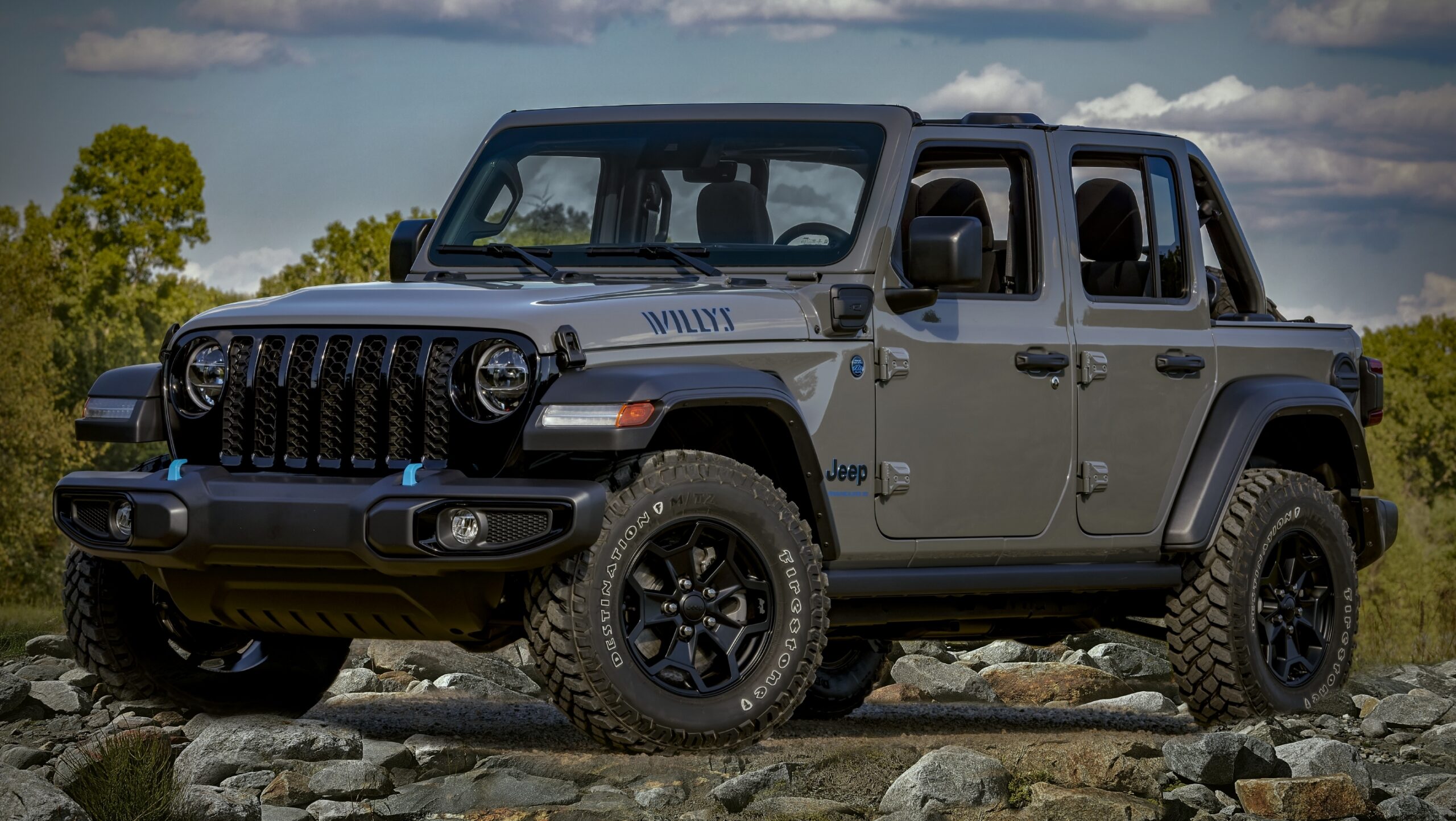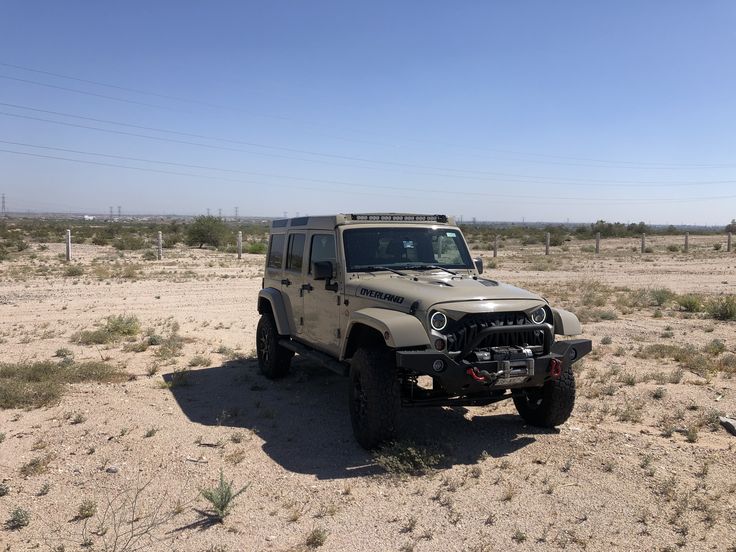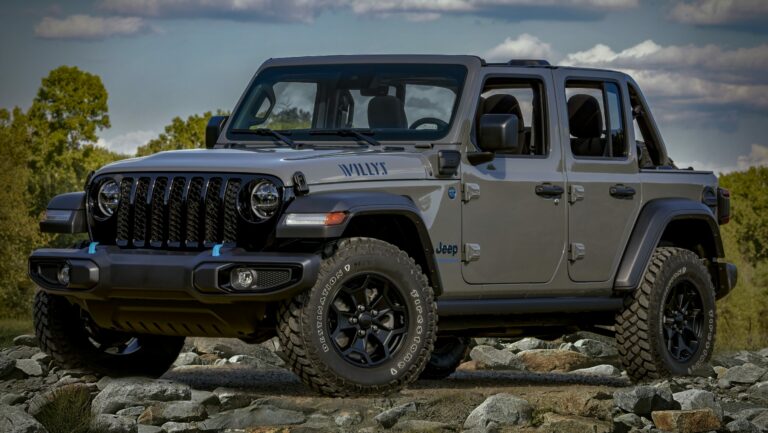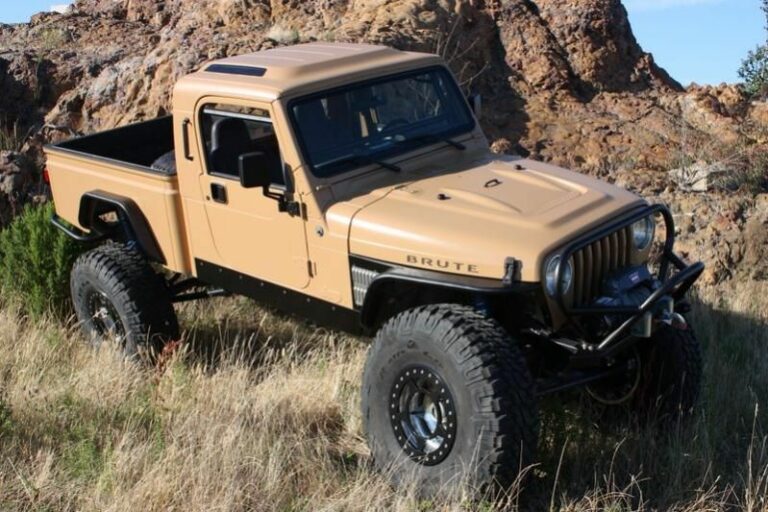Jeep CJ Wheels For Sale: A Comprehensive Guide to Upgrading Your Classic Ride
Jeep CJ Wheels For Sale: A Comprehensive Guide to Upgrading Your Classic Ride /jeeps.truckstrend.com
The iconic Jeep CJ series, a lineage of rugged, go-anywhere vehicles, holds a special place in the hearts of off-road enthusiasts and classic car collectors alike. From the early CJ-2A and CJ-3B to the ubiquitous CJ-5, CJ-7, and the distinctive CJ-8 Scrambler, these Jeeps represent a bygone era of pure, unadulterated adventure. Central to their performance, safety, and aesthetic appeal are their wheels. For anyone looking to restore, upgrade, or simply maintain their beloved classic CJ, the quest for "Jeep CJ wheels for sale" is a journey into a world of crucial decisions and exciting possibilities. This comprehensive guide will navigate you through everything you need to know about finding, choosing, and purchasing the perfect wheels for your legendary Jeep CJ.
Understanding Jeep CJ Wheels: A Legacy of Ruggedness
Jeep CJ Wheels For Sale: A Comprehensive Guide to Upgrading Your Classic Ride
At its core, a wheel is more than just a round piece of metal; it’s a critical component that connects your Jeep to the road or trail, transferring power and absorbing impact. For Jeep CJs, this connection is especially vital, given their heritage as capable off-roaders. Original Equipment (OE) wheels for CJs were typically robust steel designs, built to withstand the rigors of farm work, military service, and challenging terrain. As the years passed and the CJ evolved, so did wheel options, though always retaining that foundational strength.
A key identifier for most Jeep CJ wheels is their bolt pattern: 5 on 5.5 inches (5×5.5"). This five-lug pattern is a hallmark of the CJ series and is absolutely critical to verify when searching for replacements or upgrades. While some later models or custom builds might deviate, assuming a 5×5.5" pattern for CJs from the 1940s through the 1980s is generally a safe bet. Understanding this fundamental aspect, along with typical diameters like 15 or 16 inches and widths ranging from 7 to 10 inches, forms the bedrock of your search for Jeep CJ wheels for sale.
Why Upgrade or Replace Your CJ Wheels?
The decision to seek out new or used Jeep CJ wheels for sale isn’t just about aesthetics; it often stems from a combination of performance, safety, and functional needs.
- Performance Enhancement: Upgrading to wider wheels can accommodate larger tires, which in turn provides a larger contact patch for improved traction on various surfaces, from rock crawling to sand dunes. Proper backspacing and offset can also optimize steering geometry and articulation, enhancing off-road capability.
- Aesthetic Appeal: Wheels are one of the most impactful visual upgrades you can make to your CJ. Whether you’re aiming for a period-correct restoration, a rugged off-road look, or a custom street-friendly stance, new wheels can dramatically transform your Jeep’s appearance.
- Safety and Integrity: Old wheels, especially steel ones, can suffer from rust, corrosion, or hidden damage from years of abuse. Aluminum wheels can develop cracks over time. Replacing compromised wheels is crucial for safety, preventing potential failures at speed or under stress.
- Tire Compatibility: Modern tires, particularly larger off-road variants, often require specific wheel widths and diameters to seat properly and perform optimally. An upgrade ensures your wheels are perfectly matched to your chosen tires.
- Weight Reduction: Switching from heavy steel wheels to lighter aluminum alloys can reduce unsprung weight, potentially improving ride quality, handling, and even fuel economy slightly.

Types of Jeep CJ Wheels Available
The market for Jeep CJ wheels for sale offers a diverse range of materials, styles, and functionalities to suit every budget and purpose:
- Steel Wheels: These are the workhorses, often resembling the original equipment.
- Pros: Extremely durable, relatively inexpensive, easy to repair (bend back), ideal for hardcore off-roading where damage is likely. Many classic CJ restorations opt for steel wheels for authenticity.
- Cons: Heavier than alloy wheels, more prone to rust if not properly maintained, limited in aesthetic variety beyond basic finishes.
- Alloy (Aluminum) Wheels: The most popular choice for modern upgrades.
- Pros: Lighter weight, excellent heat dissipation (good for brakes), wide variety of designs, finishes (polished, painted, machined), and sizes.
- Cons: Generally more expensive, can be prone to cracking under severe impact (though modern alloys are very strong), harder to repair if damaged compared to steel.
- Chrome Wheels: Primarily for aesthetic appeal, often seen on show Jeeps or street cruisers.
- Pros: Striking, shiny appearance.
- Cons: Chrome can peel, pit, and corrode over time, especially in harsh climates or off-road conditions.
- Beadlock Wheels: Specialized wheels for extreme off-roading.
- Pros: Allow tires to be run at extremely low pressures (e.g., 5-8 psi) without the tire bead separating from the wheel, providing maximum traction over rocks and obstacles.
- Cons: Very heavy, often expensive, require more maintenance, and are typically not street legal in all jurisdictions (check local laws before purchasing for street use).
Key Considerations When Buying Jeep CJ Wheels
Before you commit to a purchase, several critical factors must be thoroughly evaluated to ensure compatibility, performance, and satisfaction.
- Bolt Pattern: As emphasized, the 5×5.5" (5 on 5.5 inch) bolt pattern is paramount for most CJs. Double-check your specific CJ model year to confirm, but this is the industry standard for CJs.
- Wheel Diameter & Width: Common diameters are 15" and 16", with widths ranging from 7" to 10". Your choice will depend on your tire size. Generally, a tire’s width should be within 1-2 inches of the wheel’s width for optimal fit and performance. Larger tires might necessitate larger diameter wheels or wider wheels.
- Backspacing & Offset: These terms describe how the wheel positions the tire relative to the wheel well and suspension components.
- Backspacing is the distance from the mounting surface of the wheel to the wheel’s inner edge. Lower backspacing (e.g., 3.75-4.5 inches) pushes the wheel further out, providing more clearance for wider tires against the frame and suspension.
- Offset refers to the distance from the wheel’s mounting surface to the centerline of the wheel.
- Positive Offset: The mounting surface is towards the outside of the wheel, pulling the wheel in.
- Negative Offset: The mounting surface is towards the inside, pushing the wheel out (more common for wider off-road tires on CJs).
- Zero Offset: The mounting surface is exactly at the wheel’s centerline.
- Incorrect backspacing or offset can lead to tires rubbing on fenders, frame, or suspension components, especially when turning or during suspension articulation. Research what works best for your specific CJ model and intended tire size.
- Material: Revisit the pros and cons of steel vs. alloy based on your budget, intended use (daily driver, trail rig, show vehicle), and aesthetic preference.
- Condition (for used wheels): If considering used Jeep CJ wheels for sale, inspect them meticulously. Look for cracks, deep gouges, bends, excessive curb rash, corrosion, or damage around the lug holes. A slight bend might be fixable, but cracks are a deal-breaker.
- Budget: Prices vary wildly depending on material, brand, condition (new vs. used), and style. Set a realistic budget and stick to it. Remember to factor in potential shipping costs, especially for large items.
- Intended Use: A CJ used primarily for show or light street driving might prioritize aesthetics, while a dedicated rock crawler will prioritize strength and beadlock capability.
Where to Find Jeep CJ Wheels For Sale
The market for Jeep CJ wheels is robust, offering numerous avenues to find what you need:
- Online Retailers & Specialty Jeep Stores: Major players like Summit Racing, Quadratec, 4 Wheel Parts, Morris 4×4 Center, and ExtremeTerrain offer a vast selection of new steel and alloy wheels specifically designed for Jeeps, including CJs. They often provide detailed specifications and fitment guides.
- Dedicated Jeep Forums & Social Media Groups: Online communities focused on classic Jeeps are excellent resources. Members often sell used parts, including wheels, and can offer invaluable advice. Facebook Marketplace and dedicated Jeep CJ groups are treasure troves.
- Used Marketplaces: eBay and Craigslist are perennial favorites for finding used Jeep CJ wheels for sale. Be cautious and always ask for detailed photos and condition descriptions. Local pickup is ideal to inspect the items in person.
- Swap Meets & Off-Road Events: These events are fantastic for finding unique, vintage, or rare parts. You can often haggle on prices and inspect items firsthand.
- Local Off-Road Shops: Many local 4×4 shops specialize in Jeeps and might have new or used wheels in stock, or can order them for you. They can also provide expert installation services.
Tips for a Successful Purchase and Installation
- Measure Twice, Buy Once: Before purchasing, double-check your CJ’s bolt pattern, and if you’re upsizing, measure your fender wells and suspension clearance to ensure the new wheels and tires will fit without rubbing.
- Inspect Thoroughly (for Used): Don’t be afraid to ask for extra photos or even a video for used wheels. If possible, inspect them in person. Bring a tape measure and a flashlight.
- Consider a Wheel & Tire Package: Many retailers offer pre-mounted and balanced wheel and tire packages. This can be more convenient and sometimes more cost-effective than buying components separately.
- Don’t Forget the Details: New wheels typically do not come with lug nuts or valve stems. You’ll need to purchase these separately, ensuring the lug nuts are the correct thread pitch and style (e.g., acorn, spline drive) for your new wheels and existing studs.
- Professional Installation & Balancing: Always have your new wheels and tires professionally mounted and balanced. Proper balancing prevents vibrations and extends tire life.
- Test Fit: Before final installation, especially if you’re pushing the limits on tire size, do a quick test fit to ensure adequate clearance when turning and flexing the suspension.
Challenges and Solutions
- Finding Period-Correct Wheels: Original CJ steel wheels in good condition can be hard to come by. Solution: Look for high-quality reproductions from specialty manufacturers, or be patient on the used market. Rust on steel wheels can often be sandblasted and powder-coated for a fresh look.
- Fitment Issues with Larger Tires: Going too big can lead to rubbing. Solution: Research extensively on forums and consult with experienced CJ owners. Often, a mild suspension lift or fender flare modification is needed to accommodate larger wheel/tire combos.
- Shipping Costs: Wheels are large and heavy. Solution: Factor shipping into your budget. Sometimes, buying locally or from a retailer with free shipping promotions can save a significant amount.
- Identifying Damage on Used Wheels: Cracks can be hidden. Solution: A trusted mechanic can sometimes perform a visual inspection or even a run-out test on a balancing machine to detect subtle bends or damage.
Price Table: Estimated Costs for Jeep CJ Wheels For Sale
Please note that these prices are estimates and can vary significantly based on brand, material, finish, seller, and market demand. Prices are per wheel.
| Type of Wheel | Material | Condition | Typical Diameter/Width | Estimated Price Range (per wheel) | Notes |
|---|---|---|---|---|---|
| Original Steel (Used) | Steel | Fair to Good | 15×7, 15×8 | $50 – $150 | May require refinishing (sandblasting, paint/powder coat) |
| Reproduction Steel | Steel | New | 15×7, 15×8 | $80 – $200 | Great for authentic restorations, durable |
| Aftermarket Alloy (Basic) | Aluminum | New | 15×7, 15×8 | $120 – $250 | Wide variety of styles, good value |
| Aftermarket Alloy (Premium) | Aluminum | New | 15×8, 16×8, 17×9 | $250 – $400+ | Higher-end brands, specialized finishes, stronger designs |
| Used Aftermarket Alloy | Aluminum | Good-Excellent | 15×7, 15×8, 16×8 | $80 – $200 | Excellent value if carefully inspected for damage |
| Beadlock Wheels | Steel/Aluminum | New | 15×8, 17×9 | $300 – $600+ | For serious off-roading, check legality for street use |
| Rare/Vintage OE Wheels | Steel/Aluminum | Varies | Varies | $100 – $500+ | Collector’s items, price depends on rarity and condition |
Note: These prices do not include tires, mounting, balancing, lug nuts, or shipping costs.
Frequently Asked Questions (FAQ) About Jeep CJ Wheels
Q1: What is the standard bolt pattern for Jeep CJs?
A1: The vast majority of Jeep CJ models (CJ-2A, CJ-3A, CJ-3B, CJ-5, CJ-6, CJ-7, CJ-8 Scrambler) use a 5-on-5.5 inch (5×5.5") bolt pattern. It’s crucial to verify this for your specific model year, but it’s the industry standard for CJs.
Q2: Can I put larger wheels/tires on my stock CJ without modifications?
A2: It depends on how much larger you go. A slight increase in tire size might be accommodated, but significant increases typically require modifications like a suspension lift, body lift, and/or fender trimming to prevent rubbing during turns or suspension articulation. Always measure and research thoroughly.
Q3: Are beadlock wheels street legal?
A3: In many jurisdictions, true beadlock wheels are not considered street legal due to their design, which allows for extreme low-pressure operation and the potential for the beadlock ring to come loose. Always check your local and state regulations before installing beadlock wheels for street use. "Simulated beadlock" or "beadlock-style" wheels are generally fine as they don’t have the functional beadlock mechanism.
Q4: What’s the difference between backspacing and offset?
A4: Both describe how the wheel sits relative to the vehicle.
- Backspacing is the distance from the wheel’s mounting surface to its inner edge. Lower backspacing pushes the wheel further out.
- Offset is the distance from the mounting surface to the wheel’s centerline. Positive offset pulls the wheel inward, negative offset pushes it outward, and zero offset means the mounting surface is at the centerline.
Both are critical for tire clearance and suspension geometry.
Q5: Should I buy steel or alloy wheels for my CJ?
A5:
- Steel wheels are generally more affordable, very durable, and easier to repair from trail damage (bending back). They are heavier and more prone to rust. Ideal for hardcore off-roading or authentic restorations.
- Alloy (aluminum) wheels are lighter, offer a wider variety of styles and finishes, and dissipate heat better. They are more expensive and can crack under severe impact. Ideal for daily drivers, improved performance, and aesthetic upgrades.
Q6: Do new wheels come with lug nuts?
A6: Typically, no. Lug nuts are almost always sold separately. You’ll need to purchase a set that matches the thread pitch of your CJ’s wheel studs (e.g., 1/2"-20 for most CJs) and the seat type (e.g., acorn/conical, spline) compatible with your new wheels.
Conclusion
The journey to find the perfect "Jeep CJ wheels for sale" is an exciting part of owning and customizing one of these timeless vehicles. Whether you’re seeking to restore your CJ to its original glory, enhance its off-road prowess, or simply give it a fresh, personalized look, the right set of wheels makes all the difference. By understanding the critical factors like bolt pattern, backspacing, material, and condition, and by leveraging the myriad of resources available, you can confidently navigate the market. With careful consideration and a clear vision for your classic Jeep, you’ll soon have it rolling on a set of wheels that perfectly complement its rugged charm and legendary capability, ready for countless more adventures on the road less traveled.




